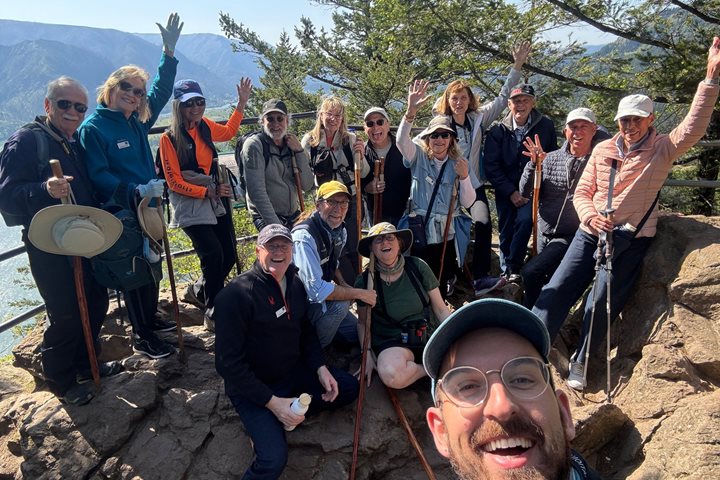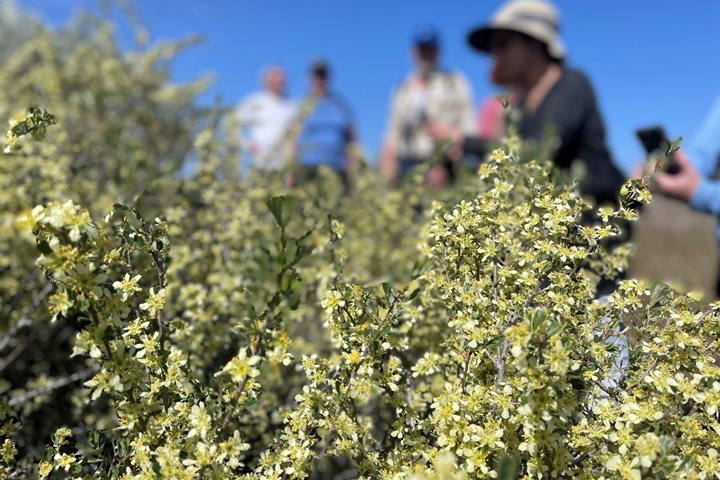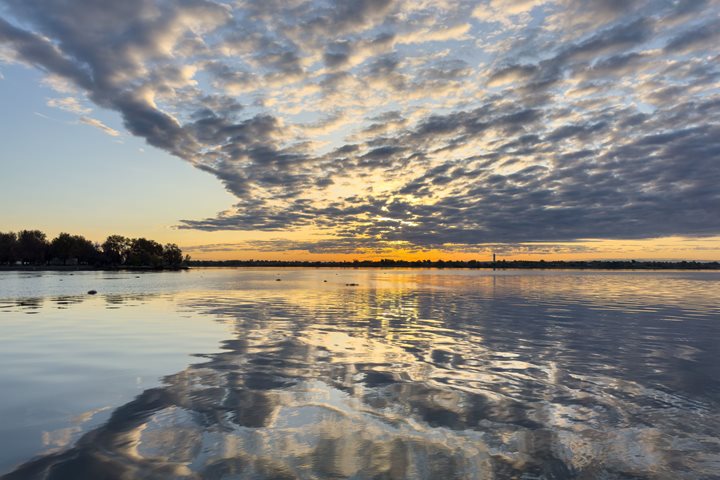So far on our journey upstream from Astoria, we have been able to stay ahead of inclement weather. However, our good fortune may end today. The sky is overcast and the weatherman predicts rain.
Early this morning we entered the loch at Ice Harbor Dam, with a guillotine-style gate. As the National Geographic Sea Bird rose from the depths of the chamber, we were greeted with a panorama of the Scab Lands. This lonely high desert country landscape is the result of tremendous Ice Age floods, perhaps 100 of them, that scoured eastern Washington and Oregon before rushing westward to the sea.
Afterwards Lee Moll, our naturalist, gave a fascinating presentation on some of the flora and fauna, many new to science, encountered by Lewis and Clark and the Corps of Discovery.
Later in the morning, the loch keepers at Lower Monumental Dam gave us permission to pass through the loch in our inflatable landing craft. The perspective from those little boats helped us appreciate the massive scale of the loch chamber.
Once back on board, National Geographic photographer Rich Reid whisked us away via still images and video to other Lindblad destinations in Southeast Alaska, Arctic Svalbard, and the Galápagos. Following Rich, geologist Stewart Aitchison showed a two-minute geology video explaining the formation of the Palouse waterfall and canyon, which we would visit later today.
As we filed into lunch, a mountain goat was spotted high on the slopes above the Snake. What a seemingly odd place to see such an animal. Why and how it got here is baffling.
After lunch, with rain still threatening but holding off, we had the opportunity to visit the Palouse waterfall and also explore the Palouse River by inflatables or kayak.
After dinner, historian Don Popejoy regaled us with the tales of the Corps of Discovery trying to make the final approach to the Pacific Ocean. Storm after storm soaked the expedition. Pounded rancid fish was all they had to eat. There were no beaches or shelters along the Washington Coast. Lightning, gales, hail, and rain struck the Corps. Fresh water for drinking was difficult to find. Their crude dugout canoes could barely make headway against the wind. But finally after ten days of horrid weather, the sun came out and they made it to the ocean. But then the local native people told them that they should go to the south side of the Columbia River, where there were more elk to eat and make new clothes and extensive protective forest. Another arduous journey upstream was necessary to find a place to cross the broad tumultuous Columbia River. Eventually though, they established Fort Clatsop, their winter quarters.
After hearing these wild tales, we feel fortunate to have a dry, level place to sleep and wonderful meals to consume. No rancid pounded fish and rotting buckskin clothing for us.







